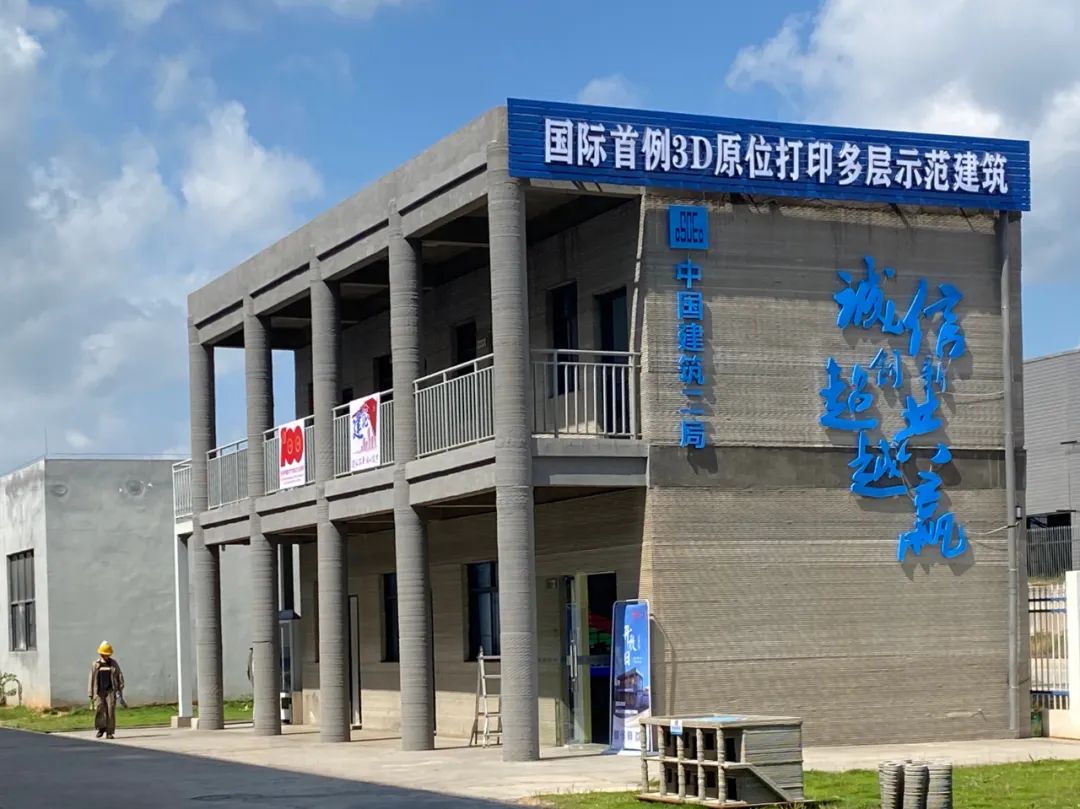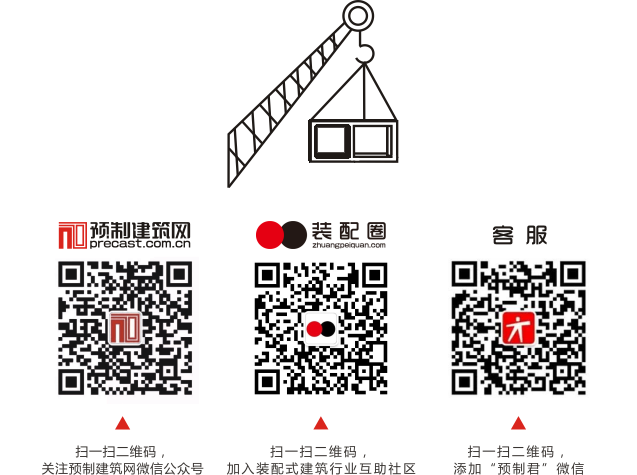3D printing buildings become a "new blueprint" for intelligent construction
Author:www.precast.com.cn
Time:15/06/2022

With the continuous injection of construction materials by a "3D printer" equipped with automatic nozzles, a two-storey office building with a construction area of 230 square meters and a total height of 7.2 meters can be built in just 3 days with the cooperation of 5~6 workers." Eat in" raw materials, can "spit out" a building? This seemingly impossible thing has become a reality with 3D printing technology.
"The printer is equipped with a special concrete mixture 'printing material'. After connecting with the computer, the 'printing material' is superimposed layer by layer through computer control, and finally the blueprint on the computer becomes a real thing." The person in charge of the Sunshine Intelligent Manufacturing Company of the South China Company of China Construction Second Bureau told reporters that there is no waste of raw materials and less industrial waste, which greatly reduces the total cost of the project. Since the raw materials are high-strength concrete, the life cycle can reach 50 years.
The house can be printed, and the hydropower station can also be printed.
Construction machinery shuttles back and forth at the dam construction site of the Yellow River Yangqu Hydropower Station on the Qinghai-Tibet Plateau. Two years later, the world's largest 3D printing project will be born here. Liu Tianyun, chief scientist of the Yangqu Hydropower Station project and associate researcher at the State Key Laboratory of Water and Sediment Science and Water Conservancy and Hydropower Engineering at Tsinghua University, told reporters that the project uses computer models to "slice" the dam into many different construction steps. And develop corresponding robots at each step, complete the work layer by layer, and realize the effect of 3D printing as a whole step by step. "The dam of a hydropower station is a flexible structure, and its stability mainly depends on the frictional force generated by the mutual contact and extrusion of materials." Therefore, even without the support of steel bars, the "printed" dam layer by layer is still very stable, Liu Tianyun explained.3D printing technology is similar to printing text on paper, but the difference is that it can spray the raw materials as "ink" onto the printing path layer by layer, so that the raw material itself can accumulate and complete the transformation from a two-dimensional plane to a three-dimensional shape. One of the most obvious advantages of 3D printing buildings is speed. It only takes 24 hours of printing time to build a single-storey home of about 46 square meters. 3D printing not only saves time, but also eliminates construction molds, reduces construction waste and construction dust, saves building materials, and achieves energy conservation and carbon reduction.
"The advantages of this technology are manpower saving, high efficiency and low cost. Different from traditional construction, architects can use this technology to build unprecedented surfaces and shapes, creating more possibilities for design." Xu Weiguo, a professor at the School of Architecture of Tsinghua University, said that there are still a large number of houses and infrastructures to be built in my country. Intelligent construction methods such as 3D printing can not only make up for the shortage of labor resources, but also avoid the construction process being affected by human factors, making the construction process more difficult. More standardized, refined and intelligent.
Although 3D printing buildings have the advantages of high strength, free architectural form, more environmental protection and energy saving compared with traditional buildings, as a new technology, there is still a long way to go.
Compared with ordinary 3D printing technology, the 3D printing technology of concrete is more difficult and has higher requirements on building materials. The first thing to do is to ensure that the concrete can flow smoothly during the printing process, so that it can enter and exit the printer smoothly without clogging. Second, the concrete extruded from the printer must be able to harden quickly and become strong enough to withstand subsequent layers. On the basis of meeting the above requirements, it is also necessary to achieve sufficient adhesion between these layers, and the tight connection makes the building seamless.
In terms of printing equipment, the current 3D printing concrete equipment can not fully meet the specific requirements of its application environment, and can only meet the plane expansion stage, which can be used for the construction of low-rise large-area buildings, but cannot be printed for high-rise buildings. In addition, in terms of industry regulations, as a new technology, 3D printed concrete's special mix design and various construction techniques have led to great difficulties in its standards and regulations. There is currently no corresponding industry standard for the fire resistance, sound insulation and environmental protection properties of buildings produced by 3D printing technology.
From "moving bricks and building walls" to "3D printing", this is the exploration of construction from mechanization to intelligence, and it is also a vivid practice of promoting high-quality development with technological innovation. Although it is not yet mature, it provides more possibilities for the development of construction industrialization.



 苏公网安备 32041102000002号
苏公网安备 32041102000002号